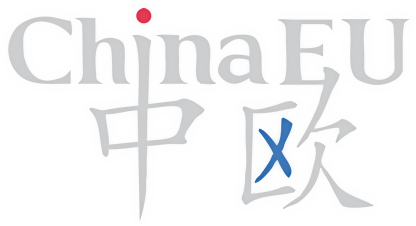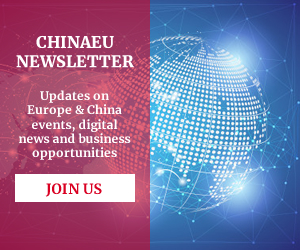ChinaWatch: Bridge to the future
By Luigi Gambardella
Chinese President Xi Jinping has wrapped up his trip to Europe, in which he paid state visits to Italy, Monaco and France and met with EU leaders. Media headlines have focused on the Italian part of the visit and in particular the memorandum of understanding between China and Italy to officially support the Belt and Road Initiative. Most of the media coverage, unfortunately, failed to highlight the great significance of Xi’s visit to Italy: It comes 10 years after the last state visit by a Chinese president and was the first overseas destination for Xi this year.
The visit, which came soon after China’s largest political event of the year, the annual two sessions, was not born out of coincidence. Such visits take months to plan, thus Xi’s trip was both significant and rich in symbolism.
The visit is set to renew the two countries’ comprehensive strategic partnership forged in 2004 and kick off a new era for bilateral cooperation in the future with regional and global influence.
Italy, which suffers from a lack of investment, fell into economic recession in the final three months of last year, lags behind other European countries in terms of exporting goods to China and attracting Chinese investment, as Michele Geraci, undersecretary of state for economic development in the Italian government has said.
Data quoted by Geraci showed that in 2017, Italian exports to China were worth around 13 billion euros ($14.6 billion), with Italy ranking ninth after Japan, the United States, Germany, Russia, Switzerland, France, the United Kingdom and Canada.
From 2005 to 2018, out of the top 15 European countries that received the most Chinese greenfield investment, Italy ranked last but one, with investment of 933 million euros, almost nothing compared with that of the UK, which absorbed 15.977 billion euros in total. Accordingly, the number of jobs created by Chinese greenfield investment in Italy was merely 3,189 over that period.
In the same period, there were 22 cases of Chinese companies merging with or acquiring Italian companies, which is much less than Chinese acquisitions in the UK, Switzerland, Germany and France.
Italy has drawn criticism for its decision to sign an MoU with China during Xi’s visit, but these figures show that the Italian government has good reasons to snub the “concerns” of other EU countries and to go ahead with the agreement.
Moreover, what the visit brings goes way beyond this nonbinding MoU. Italy, as part of the European Union, shares the responsibility to shape the bloc’s common approach toward China. But to be honest, the EU has been really slow in this regard. Last week, some EU leaders even sparked uproar by labeling China “a systemic rival”.
What Rome has been doing could help ease the rising antagonism toward the emerging powerhouse China and inject positive momentum into more constructive EU-China relations. Italy is not picking a side between its EU partners and Beijing, there is no need for a European country to do so anyway, but more important, it demonstrates the truth that international trade is anything but a zero-sum game, particularly at a time when the world is becoming multipolarized.
Xi’s landmark visit reflects the new Italian government’s efforts to advance its ties with Beijing. In the second half of last year, Italy set up a China task force to strengthen its economic cooperation with China, positioning it as “a privileged partner” in the Belt and Road Initiative.
The trip will further unleash great potential in bilateral trade and investment, enhance mutual understanding and expand cooperation in many areas including space, infrastructure, tech innovation and people-to-people exchanges.
Rome and Beijing are set to enhance their coordination under the framework of the Belt and Road Initiative with Italy planning to develop its northern ports and the InvestItalia program, according to an article signed by Xi published in the leading Italian newspaper Corriere della Sera ahead of his state visit. Their joint efforts will target various dimensions, on sea, on land, in the air, in space and in the cultural domain.
China promises an opener market, suggesting its willingness to increase imports from Italy.
Besides what Xi mentioned in his signed article, it is noteworthy for both countries to further work on areas such as tourism, and the digital and health sectors.
China has for years stayed the largest source of outbound tourists and the biggest spender in the global tourism market. Chinese are big fans of Italian luxury goods and their consumption roughly accounted for one-third of total sales. As tourism contributes more than 10 percent of Italian GDP, seeking better Italian-Chinese tourism cooperation is every bit as important as attracting Chinese investment.
So is cooperation in the digital and health sectors. The Digital Silk Road is a vital part of the Belt and Road Initiative and both Italy and China’s digital economies are ballooning. In the era of digital transformation, Rome and Beijing, should join their hands to further explore their digital cooperation, for instance, on smart cities, the internet of things and cloud computing, among other things.
Chinese companies have already showed their interest in investing in Italian healthcare companies. From 2005 to 2018, Chinese takeovers of Italian health companies reached $360 million, data from China Global investment tracker shows. China’s healthcare market is expected to grow as its healthcare spending is projected to increase to $1 trillion dollars in 2020.
In 2020, Italy and China will celebrate the 50th anniversary of the establishment of their diplomatic ties. Dedicating his first visit of the year to Italy, Xi has shown his sincerity and commitment for better ties with Italy as well as Europe. There are many differences between Rome, Brussels and Beijing, but exchanges and dialogues speak louder than confrontations, that is the essential meaning of Xi’s milestone visit to Italy.
This article appeared at www. chinawatch.cn.

